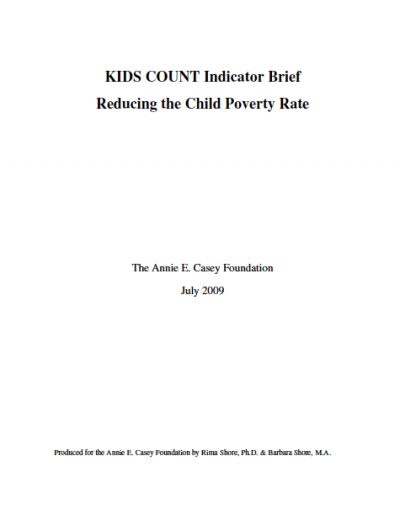U.S. Children in Poverty
Nearly 1 in 5 children in the US was living in poverty in 2007; 14 states have child poverty rates over 20%.

The number of children in the US whose families have incomes at or below the federal poverty line is on the rise. This brief outlines five strategies for moving families out of poverty and toward financial stability.
The number of children in the U.S. living in economically disadvantaged families continues to rise, especially in light of the recent recession and its impact across the country. This problem is not, however, inevitable; recommended strategies for raising children and families out of poverty include:
We hope you'll find value in this report. We’d love to get a little information from you, which we'll use to notify you about relevant new resources.